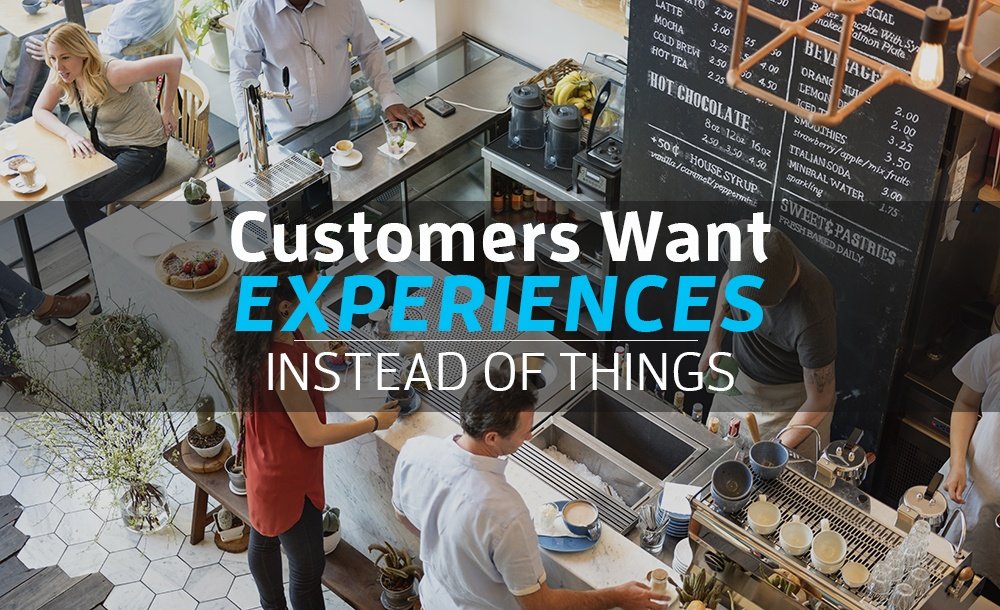
As retailers across the country struggle with drawing customers into their stores and competing with online shopping, store owners need to find a new approach to connecting with shoppers. They need to start focusing on giving customers what they really want — experiences.
Research continues to show that customers are beginning to want experiences more than they want things.
Consumers, particularly millennials consumers, are spending more money on doing things, rather than purchasing things.
Marshal Cohen, a retail-industry analyst at leading retail marketing research company The NPD Group, doesn’t see an end coming to this trend.
“Consumers [are displaying a] willingness and propensity to spend but not purchase. It’s not about acquiring things — it’s about doing things. [People are seeking] adventure, memories and [want to] capture the moment. It’s about sharing what you’ve done — not necessarily what you bought,” Cohen said.
It’s not just Cohen that acknowledges this change. There are multiple reasons and studies that show why customers are moving away from things and toward experiences.
What Makes Customers Want Experiences?
Reasons that customers want experiences can be found in both social and scientific factors.
Social Media and FOMO
FOMO is the “fear of missing out.” It’s the feeling that people get when they see a friend or acquaintance experiencing something that they are missing out on.
FOMO isn’t something new, but social media has expanded the existence of this feeling. With constant status updates and the sharing of photos, people now experience more FOMO than ever before.
An Eventbrite “Experience Economy” Report found that, “Nearly three in four (73%) of respondents agreed that a fear of missing out (FOMO) often drives the need to seek out new activities and experiences: as events and experiences are now being shared on social media immediately and worldwide…”
People see their friends sharing experiences online, and they want to be able to do the same.
Science & Psychology
It’s not just the feeling of missing out that is making customers want experiences. It many ways, it’s the actual good feeling of experiences and even the feeling of waiting for experiences that gives people real pleasure.
A study conducted by the Psychology Department at San Francisco State found that, “people enjoy greater well-being from life experiences and consider them to be a better use of money.
Another group of researchers was interested in learning why experiences were often seen as more valuable than possessions to people. They discovered that it’s not just the actual experience that provides value. It’s often also the anticipation leading up to the experience that people enjoy.
They reported that “people derive more happiness from the anticipation of experiential purchases and that waiting for an experience tends to be more pleasurable and exciting than waiting to receive a material good.”
Both science and social pressure are catalysts for why more customers want experiences instead of things. There is an internal drive and a status awareness that is making more people spend their money on experiences.
So, what does this mean for retailers who are primarily focused on selling things? You may need to start selling experiences along with your physical items.
Give Customers The Experiences They Want
Cohen believes that retailers must change and adapt to this shift in consumerism if they want to continue to connect with customers. Customers want experiences, and retailers need to give them that.
“That means that product [makers] are going to have to step up their game. Stores are going to really have to enhance the experience and do a better job of bringing the excitement of the product to the consumer,” Cohen went on.
Some retail stores are already embracing this strategy.
The Washington Post reports that Nordstrom has added an experiential element to shoe buying. They’ve added counters to their shoe department and created a system where customers can sort through various designs, fabric samples, and heel heights to design their own shoes.
Lululemon is also embracing this concept. At the flagship store in New York City, they now offer a concierge service that helps their customers schedule experiences such as booking an exercise class or plan out a running route in the city.
Both of these examples show how retailers can begin to offer both physical products along with interesting experiences.
How to Create Experiences for Your Shoppers
As you begin to brainstorm ways that you can give your customers the experiences they want, ask yourself the questions to create the following types of experiences.
- Product-based experiences. How can you improve the way customers interact with your products? Can you offer special access in person? Can you tie products to omni-channel marketing to make them more interesting?
- Staff-based experiences. What special interactions can you create between your staff and customers? How can you use your team to upgrade the experience of a shopper in your store? What extra value can your team offer?
- Event-based experiences. Could you offer a class, seminar, training, open houses, or other special event that would lead shoppers to your store?
- Bonus experiences. What unusual or interesting bonus experience could you offer to customers who visit your store? What memorable encounter or adventure could they have at your store? What story could you help them create?
- Loyalty experiences. What upgraded, special VIP experience could you offer to loyal customers to encourage them to shop and then, thank them for visiting your store?
More and more customers want experiences more than products, and these are just a few ideas for how you can give them what they want. Use these questions to get your creative juices flowing, and then for even more tips and ideas on how to upgrade your retail store, get our free guide.
It looks deeper into what elements you can add (or remove) from your retail store to start giving customers what they want and need.